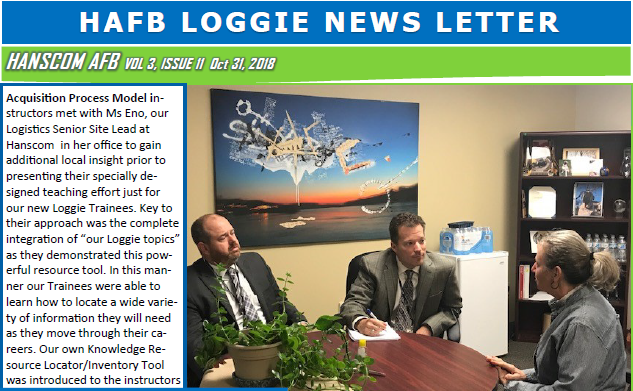
If you have not heard, the APM is the tool to visualize current acquisition policy, making it easier for PMs, PEOs and their staffs to understand and tailor processes. Relevant to all functionals involved in Big A acquisition activities, this fantastic tool hasmany uses – allowing users to gain insight and direction anywhere in the acquisition process, with information such as who has process authority/responsibility and links to relevant policy and templates. Based on over 290 authoritative documents, theAPM also allows users to search its entire database of diagrams,inputs/outputs, processes, performers/owners, reference documents, and templates by keywords.
With over 24,000 page hits this year, the APM continues to expand in both functionality and content. Both were on display in recent presentations at Hanscom AFB. In support of an event for the Revolutionary Acquisition Techniques Procedures and Collaboration (RATPAC) group (civilian and military junior acquisition professionals focused on identification of obstacles hindering acquisition program execution and implement solutions), the APM team provided APM familiarization training with an emphasis on Middle Tier Acquisition processes. Additionally, while at Hanscom, the APM team worked with Mr. Tom Christensen (Logistics Trainer) andMs. Paula Eno (Logistics Senior Site Lead) to tailor the APM training. The approach utilized common logistics topics and demonstrated how the APM helps distill the acquisition data into understandable and manageable information buckets.
In response to the above, the APM team has developed a revised landing page (available at https://www.afacpo.com/apm). We welcome feedback on this new landing page at usaf.pentagon.saf-aq.mbx.saf-aqxp-cpi-wkflw@mail.mil. Also, the APM team is willing to work with you to develop/conduct either on-site or virtual training to meet your specific needs. With regular training available at the Training tab from www.afacpo.com, please contact the teamat usaf.pentagon.saf-aq.mbx.saf-aqxp-cpi-wkflw@mail.mil to discuss specific training objectives.
